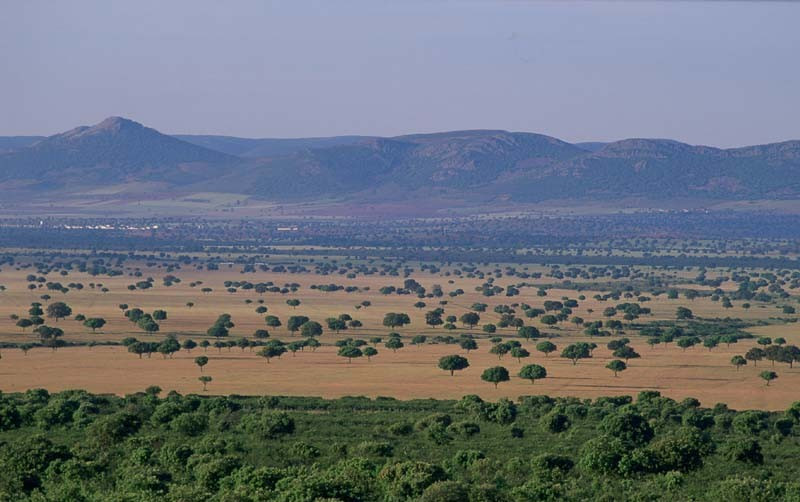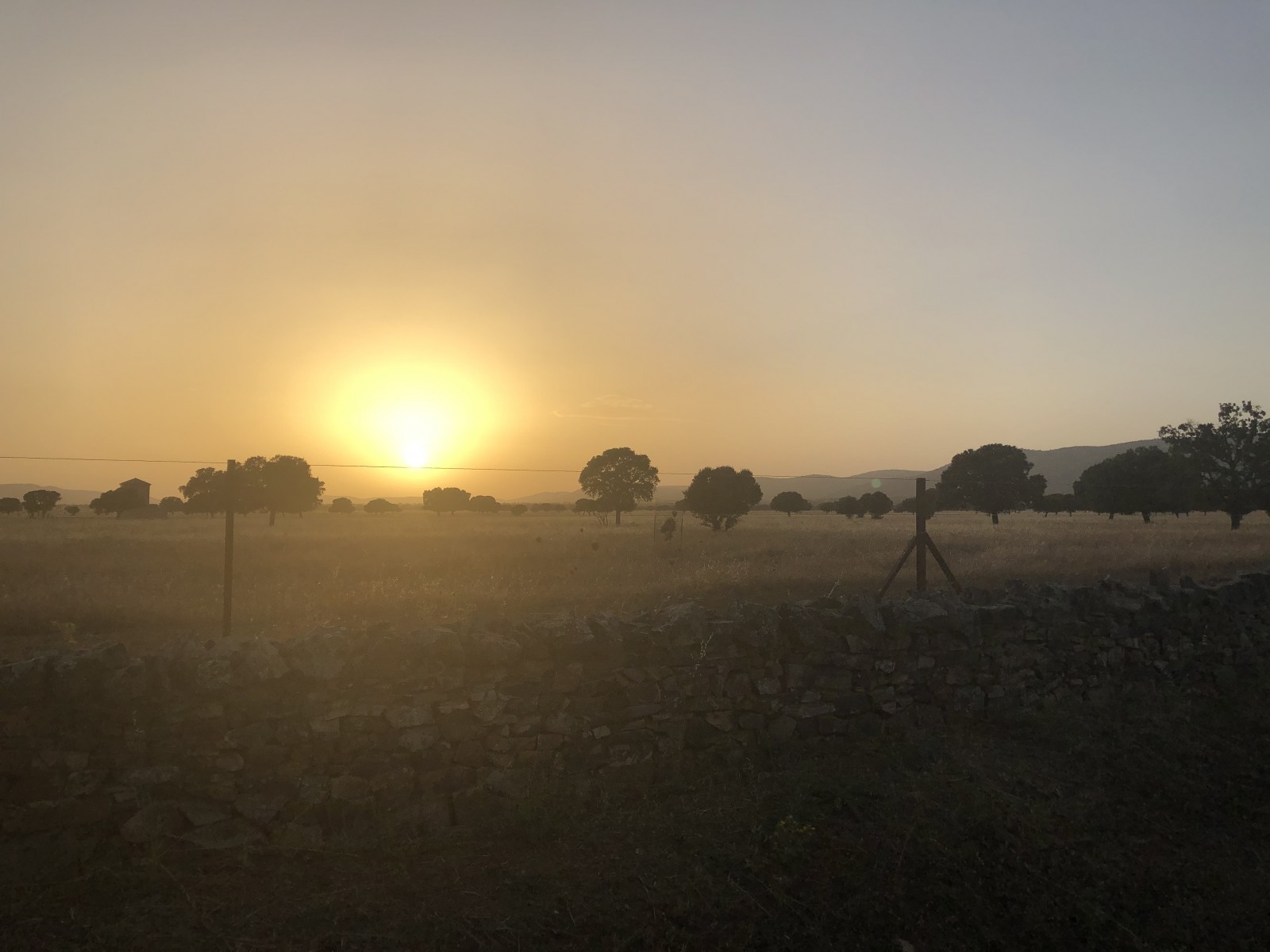Descrição
The huge Cabañeros national park lies in the heart of Spain. The area is very sparsely populated and is one of the few areas in Western Europe that is truly wild. With the wildlife to match it! The park hosts the world's second largest colony of Abutre-preto (~300 pairs), a few pairs of of Águia-imperial-ibérica, Abetarda-comum and many more endangered species! It is one of the few places in the world where nearly all the typical species of the Mediterranean ecosystem still occur. Amongst the mammals, the red deer is very numerous (especially on the Raña). All in all, plenty of reason to visit!
This route consists of 2 main areas: the scrubby and wooded heart of the National Park and the Raña savannah just outside the parks borders. On the route through the heart of the park, you can expect to see the typical species of the Spanish heartland "Monte". Abutre-preto breeds, so does Águia-imperial-ibérica, Águia-cobreira, Perdiz-comum, Poupa, Toutinegra-real, Papa-figos and many more species. This area does not have viewpoints, but it is very possible to pull up along the road and scan the area. Check the skies especially carefully for raptors (all characteristic species may be seen).
The second part takes you over the Raña, starting from Santa Quiteria in the direction of Casa Palillos (the second visitor centre). Again you can stop along the road to scan the steppes, but there is also an observatory (Observatorio de Cigüeñas) from which you can see Cegonha-branca, red deer and steppe birds. At the visitor's centre there is also an observation platform and -tower. The main species here are: Abetarda-comum, Sisão, Alcaravão, Cegonha-branca, Pega-azul as well as several raptors; Grifo-comum come down from the mountains to feed, sometimes joined by Abutre-preto or Abutre do Egipto. Águia-imperial-ibérica, Águia-real, Águia-cobreira, Águia-calçada and several harriers may be seen as well. In winter and autumn, Grou-comum is very numerous and may be seen feeding on the acorns underneath the holm oaks.
Detalhes
Acesso
The first half of the route is about 30 km long and starts in Retuerta del Bullaque and ends at the Visitor's centre in Horcajo de Los Montes. Follow the road south, straight through the heart of the National Park. Stop anywhere you like and can to look for birds of prey.
The second part is about 8 km long and takes you over the Raña, starting from Santa Quiteria in the direction of Casa Palillos (the second visitor centre). Again you can stop along the road to scan the steppes, but there is also an observatory (Observatorio de Cigüeñas) from which you can see white storks, red deer and steppe birds. At the visitor's centre there is also an observation platform and -tower where you can again look for steppe birds, big game and raptors.
Terreno e Habitat
Floresta , Planice , Montanha , Steppe , Agricultura , Campina , Árvores e arbustos dispersosCondições
Montanhoso , Sem sombra , Montanhoso , Seco , Paisagem aberta , PoeirentoCaminho circular
Nãoé útil um telescópio?
Pode ser útilBoa temporada de observação de aves
Durante todo o anoMelhor hora para visitar
Inverno , Outono , PrimaveraRota
Estrada pavimentadaCaminho dificil
FácilAcessível por
Carro , BicicletaAbrigo/plataforma deobservação de aves
SimInformação extra
Note that this is an area of extremes: summers are very hot and winters very cold. Dress accordingly!



